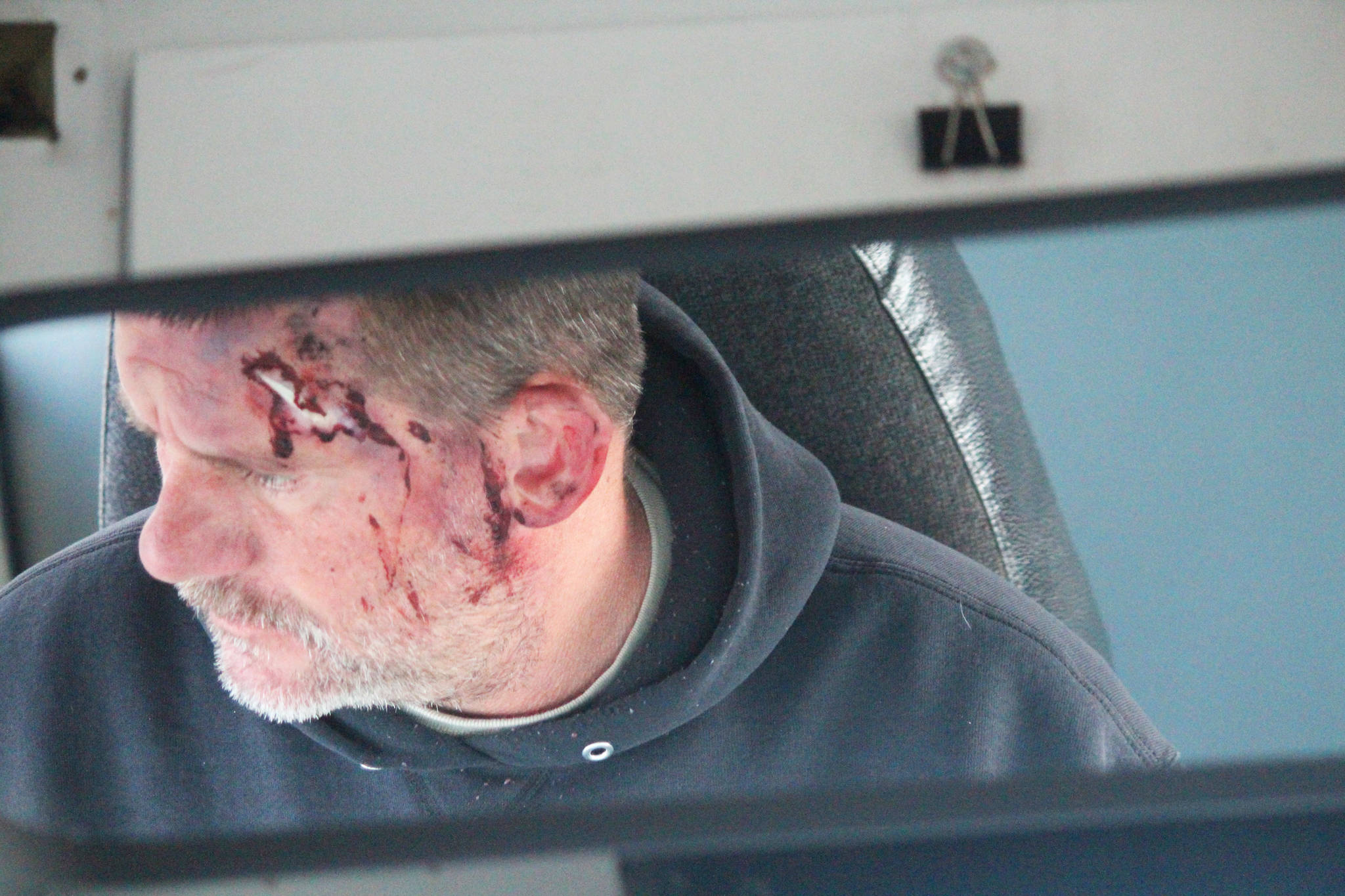Early Saturday morning, a group of local residents young and old were packed onto a school bus, driven out onto a runway at the Homer Airport, and launched into a full-scale ” airplane crash,” complete with injuries and casualties. They didn’t have to worry, though.
Not too long after the “crash,” firefighters and medics from the Homer Volunteer Fire Department, Kachemak Emergency Services and Anchor Point Emergency Services converged on the scene along with Homer Police officers.
It was all part of the mass casualty disaster drill held at the airport over the weekend. Conducted every three years, the drill is required for the airport to remain in compliance with the Federal Aviation Administration.
Airport Manager Kevin Jones said the exercise wouldn’t have been possible without the more than 20 community volunteers who turned out at 8 a.m. to pose as plane crash victims for the benefit of the emergency medical services members who practiced their response.
“It went excellent,” Jones said. “I couldn’t have been happier with everybody’s participation.”
This year’s scenario was that of a Dash 8 aircraft — the largest commercial craft that regularly uses the Homer Airport — crashing onto the airport’s fourth runway while making a landing approach. Jones said the cause of the simulated crash was unknown, and that it was undeclared, or not officially declared an emergency.
Firefighters and medics had to respond to the scene of the crash to assess the situation, put out a “fire” on the plane, triage patients and transport them to South Peninsula Hospital and area clinics. Patients were coded green, yellow or red — the three rankings in triage assessment — depending on the severity of their simulated injuries, all of which were written out on cards for the volunteers to act out.
From minor scrapes and cuts and headaches to major, life threatening injuries, the volunteers limped their way out or waited for extraction from the school bus being used as a plane. Some helped each other and the first responders in the triage area. The bus also contained several dummies used as dead victims.
Jones said the drill is switched around slightly every time, usually involving the same type of aircraft but a different location and different scenario.
“Just enough to mix it up, so people don’t get anesthetized to the same drill,” he said.
Following the exercise, the participants met at South Peninsula Hospital for a debriefing session, Jones said. A lot of good information came out of it that will be helpful to airport staff down the line, he said.
“Just like any drill, it shows areas that we need to work on,” Jones said. “But all in all, looking at it … (from a) full perspective, (there was) amazing, great interaction between all of the different agencies.”
The one thing Jones said the airport can continue to improve on, even though there were no complaints about it for this drill, is communication.
Homer Volunteer Fire Department Chief Bob Painter echoed those thoughts, saying communication between different participants in the exercise could be worked on. He also thanked the numerous volunteers for sacrificing a Saturday morning for the drill.
Painter said participants got good feedback from the drill’s evaluators.
Reach Megan Pacer at megan.pacer@homernews.com.


